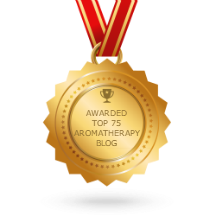In the aftermath of a baby’s birth, new mothers contend not only with a vivid swirl of emotions, but also with some distressing physical issues. After the passage of the baby through the birth canal, perineal tissue (including the external vulva and tissue between the vaginal opening and the anus) is often swollen, bruised, or even lacerated. The resulting discomfort makes walking or sitting difficult for days or weeks postpartum. As well, pain can diminish the mother’s enjoyment of her newborn baby and interfere in family dynamics (Marshall and Raynor, 2014).
The use of ice or cooling pads has long been recommended to help decrease discomfort to the perineal area after childbirth. “Padsicles”, as they are popularly known, are cooling gel, cloth, or feminine hygiene maxi-pads which are treated with soothing substances and then placed in the freezer. Applied to the perineum several times daily in the immediate postnatal period, they can be an effective tool in decreasing symptoms of pain, swelling, and bruising (Steen and Marchant, 2007).
In addition to the use of cooling pads for relief, herbalists and aromatherapists sometimes suggest the addition of herbs and/or essential oils in perineal applications to reduce pain, swelling, and to speed healing. Herbalist/aromatherapist Demetria Clark recommends herbal sitz baths, compresses, perineal rinses, or poultices using herbs or extracts such as aloe vera, witch hazel, calendula and plantain, among others (Clark, 2005a and b).
Several clinical studies have been conducted which were designed to examine the effects of lavender essential oil on postpartum perineal tissue concerns. Symptoms such as pain, swelling, or redness were found to be less prevalent in lavender treatment groups than in the control groups (Sheikhan et al 2012, Vakilian et al 2011).
Professional aromatherapists have been asked “Is it safe to use essential oils on such delicate tissue?” or “I heard that essential oils shouldn’t be used on broken skin or stitches”. As with much in the aromatherapy profession, there are no one-size-fits-all answers to these questions. Care certainly must be taken to avoid injuring delicate mucous membranes. Researchers associated with one of the above referenced studies used a 1.5% dilution of lavender essential oil in olive oil. This lavender dilution was found to significantly lessen tissue redness over a more traditionally used solution of Betadine, a common hospital antiseptic (Vakilian et al, 2011).
When asked about use of oils on stitches/suture lines, many aromatherapists advise waiting until sutures have been removed and the skin is healed over. However, in the case of a new mother who has significant pain or tissue swelling from an episiotomy, the benefits of using properly diluted essential oils like lavender can be helpful indeed. Veteran British aromatherapists Shirley and Len Price (2012) recommend that essential oils should be “diluted in a suitable base or used on a dressing pad rather than straight on the wound”. Alternatively, if one can assure that the product is very fresh and has been properly stored, a hydrosol spray can help soothe inflamed tissues. Lavender or witch hazel hydrosols come immediately to mind due to their anti-inflammatory, calming, and analgesic effects (Kerkhoff-Knapp Hayes, 2015).
There are any number of “mommy blogger” sites which offer DIY “padsicle” recipes. Such products are relatively inexpensive, disposable, and easy to make. If one keeps in mind safe dilutions and careful selection of appropriate oils or hydrosols, addition of these substances to a cooling pad may offer significant relief for one of the least pleasurable parts of new motherhood.
Soothing Hydrosol Padsicle
Choose from any (or a mix) of these hydrosols to spritz onto the surface of the pad that will make contact with tissue. Don’t saturate the pad, as you don’t want to diminish its capability to absorb fluids. After spritzing, wrap the pad in plastic wrap or place in a container in the freezer. Remove the frozen pad from the container/wrap when needed and tuck into underwear for soothing, cooling relief. As mentioned previously, please be certain that the hydrosols you choose are very fresh and have been properly stored in a cool, dark place (a refrigerator is best).
- German chamomile hydrosol
- Helichrysum hydrosol
- Witch hazel hydrosol
- Lavender hydrosol
Lavender Relief
Make a 1% dilution of lavender essential oil in 1 oz (30 ml) of Calophyllum inophyllum (tamanu) oil. (Any carrier oil would be acceptable, but tamanu has wonderful healing properties of its own). Spread a thin layer of the mixture on the surface of a clean maxi-pad; wrap in plastic or place in a container in the freezer. Remove frozen pad from the container/wrap when needed and tuck into underwear for soothing, cooling relief.
Please note that all the listed hydrosols are available online at Nature's Gift.
Sources:
Clark D. Herbs for Postpartum Perineum Care: Part One. Midwifery Today, 2005.
Clark D. Herbs for Postpartum Perineum Care: Part Two. Midwifery Today, 2005.
Dale A and Cornwell S. The role of lavender oil in relieving perineal discomfort following childbirth: a blind randomized clinical trial. Journal of Advanced Nursing. 1994;19(1):89–96.
Kerkhoff-Knapp Hayes M. Complementary Nursing in End of Life Care. Kicozo (Netherlands), 2015.
Marshall J and Raynor M. Myles’ Textbook for Midwives, 16th edition. Churchill Livingstone (Elsevier), 2014.
Price S and Price L, eds. Aromatherapy for Health Professionals, 4th ed. Churchill Livingstone (Elsevier), 2012.
Sheikhan F, Jahdi F, Khoei EM et al. Episiotomy pain relief: use of Lavender oil essence in primiparous Iranian women. Complementary Therapies in Clinical Practice. 2012;18(1):66–70.
Steen M and Marchant P. Ice packs and cooling gel pads versus no localised treatment for relief of perineal pain: a randomised controlled trial. Evid Based Midwifery 2007; 5(1):16-22.
Vakilian K, Attarha M, Bekhradi R et al. Healing advantages of lavender essential oil during episiotomy recovery: a clinical trial. Complementary Therapies in Clinical Practice. 2011;17(1):50–53.



No comments:
Post a Comment